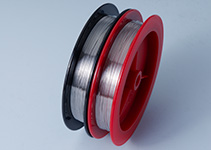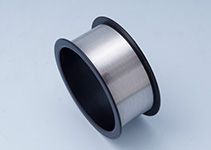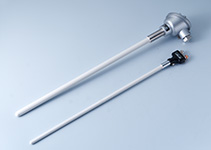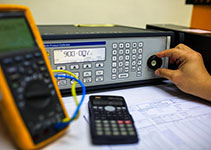Thermocouples
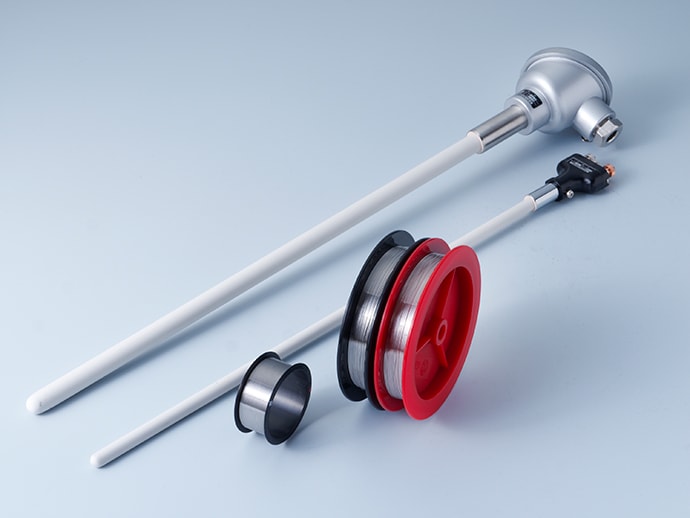
High-precision precious metal thermocouple, a trusted choice for accurate temperature measurements
Thermocouples are essential products for temperature measurement in high-temperature environments such as steel, glass, and semiconductor industries. With our excellent purification technology that removes impurities, we achieve high-precision temperature measurement.
In addition to JIS standard products, we also cater to a wide range of customer needs, including ultra-fine wires with diameters of several tens of micrometers.
Platinum-rhodium thermocouple wires
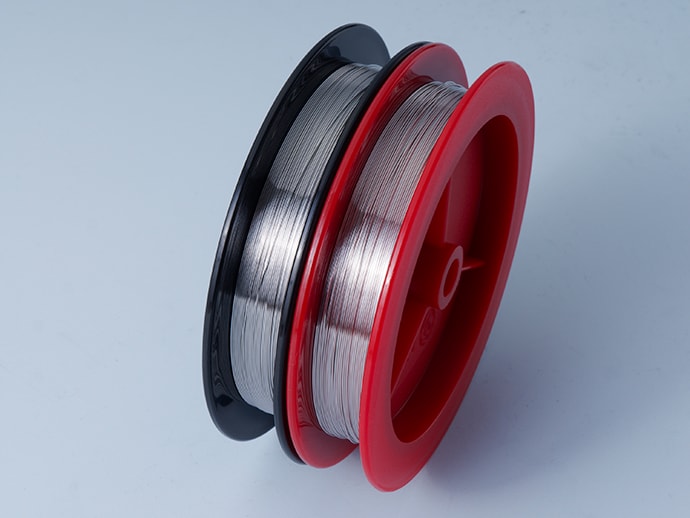
- Overview
- Platinum-rhodium thermocouple wires have a high melting point and exhibit excellent resistance to oxidation even at high temperatures. They are well-suited for precise measurements and temperature control in high-temperature environments due to their minimal chemical reactions.
- Features
-
- Our thermocouple wires are made from internally refined high-quality platinum and rhodium materials.
- Through our unique melting process, which results in uniform composition, we can provide highly accurate thermocouple wires.
- We also offer disposable thermocouples with wire diameters in the tens of micrometers range, suitable for quick measurements.
Details
JIS standards
Excerpt from JIS C 1602: 2015
| Type symbol | Positive wire | Negative wire | Tolerance classification | ||
|---|---|---|---|---|---|
| Class 1 | Class 2 | Class 3 | |||
| S | 90%PtRh | Pt | 0 to less than 1,100℃: ± 1℃ 1,100 to less than 1,600℃: ± [1 + 0.003× (t-1,100)] |
0 to less than 600℃: ± 1.5℃ 600 to less than 1,600℃: ± 0.0025× t |
- |
| R | 87%PtRh | Pt | 0 to less than 1,100℃: ± 1℃ 1,100 to less than 1,600℃: ± [1 + 0.003× (t-1,100)] |
0 to less than 600℃: ± 1.5℃ 600 to less than 1,600℃: ± 0.0025× t |
- |
| B | 70%PtRh | 94%PtRh | - | 600 to less than 1,700℃: ± 0.0025× t |
600 to less than 800℃: ± 4℃ 800 to less than 1,700℃: ± 0.005× t |
- *1t is a temperature value indicated in degrees Celsius (℃) that is independent of the sign (positive or negative) of the measured temperature.
- *2The tolerance only applies to new thermocouple wires.
Outside of JIS standards
| Product name | Positive wire | Negative wire | Measured temperature | Tolerance standard |
|---|---|---|---|---|
| 13%PR | 87%PtRh | Pt | 0 to less than 1,600℃ | ± 1.5℃ or ± 0.25% of measured temperature |
| 20%PR | 80%PtRh | 95%PtRh | 600 to less than 1,700℃ | ± 5℃ or ± 0.5% of measured temperature |
| 40%PR | 60%PtRh | 80%PtRh | 800 to less than 1,800℃ | ± 5℃ or ± 0.5% of measured temperature |
| Consumable R | 87%PtRh | Pt | 0 to less than 1,600℃ | ± 1.5℃ at 1,554℃ |
| Consumable B | 70%PtRh | 94%PtRh | 600 to less than 1,700℃ | ± 2.0℃ at 1,554℃ |
| Consumable 13% PR | 87%PtRh | Pt | 0 to less than 1,600℃ | ± 1.5℃ at 1,554℃ |
Resistance wire (platinum wire for resistance temperature detectors)
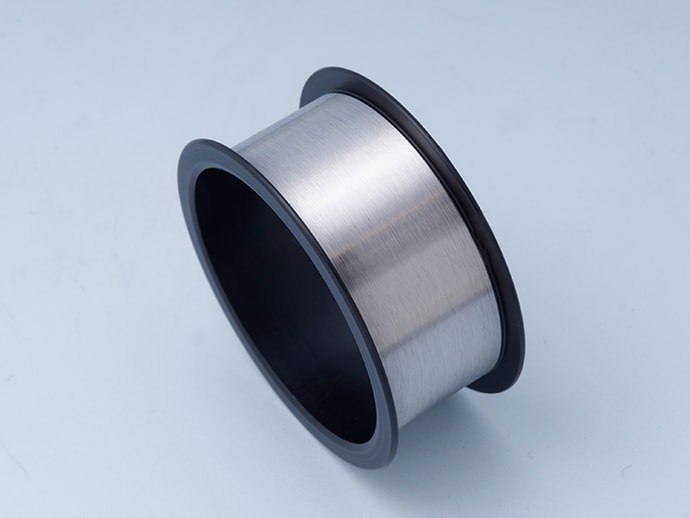
- Overview
- We offer resistance elements of platinum resistance temperature detectors (RTDs) and high-purity silver wire for their lead wires. We utilize advanced refining and processing techniques to ensure strict purity control.
- Features
- We provide two types of platinum resistance wires with different resistance-temperature characteristics.
Details
| Resistance wire for temperature sensors | Platinum temperature sensors (JIS C 1604:2013) | ||
|---|---|---|---|
| Product name | Resistance ratio (R100/R0) | JIS symbol | Resistance ratio (R100/R0) |
| R850 resistance wire | 1.3845 to 1.3865 | Pt100 | 1.3851 |
| R916 resistance wire | 1.3916 to 1.3927 | - | - |
- Wire diameter (mm)
- 0.02, 0.025, 0.03, 0.035, 0.04, 0.05, 0.06, 0.07, 0.076
We also offer customization for wire diameters not listed.
Thermocouple set products
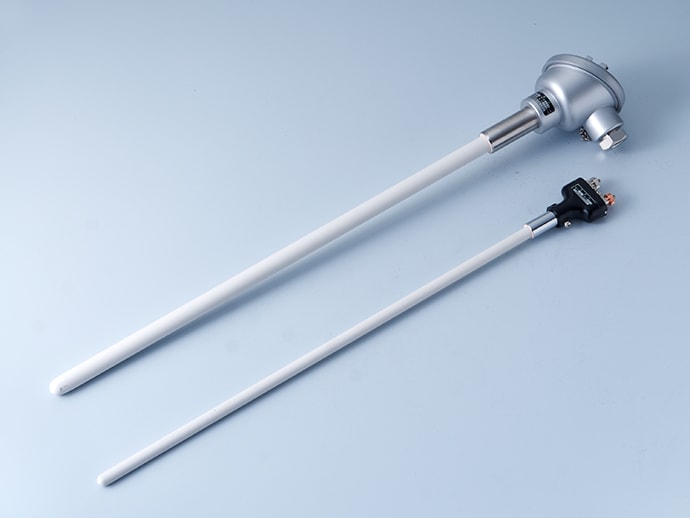
- Overview
- We offer thermocouple set products and thermocouples made from materials other than precious metals. Please feel free to contact us for further information.
Calibration
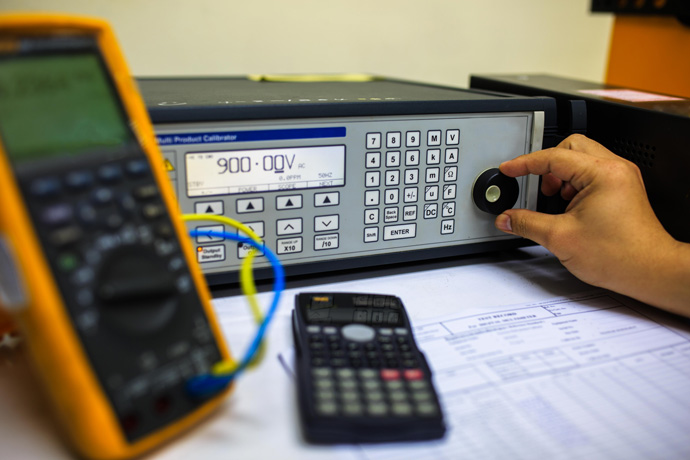
- Overview
- We provide calibration services using the comparative method and the fixed-point method. We can also provide documentation regarding traceability.
- Features
- Our thermocouples are calibrated using the fixed-point method. Upon request, we can also perform calibration tests using the comparative method. Our measuring instruments undergo regular calibration to ensure traceability to national standards.
Details
Calibration methods
| Methods | Overview | Features |
|---|---|---|
| Comparative method | The thermocouple to be calibrated is compared to a standard thermocouple in a calibration electric furnace to measure their electromotive forces for calibration. | It enables direct measurement of the target temperature. Multiple thermocouples can be calibrated simultaneously at the operating temperature. It has lower accuracy compared to the fixed-point method. |
| Fixed-point method (Crucible method) | A high-purity metal is placed in a crucible, and the thermal electromotive force at the melting or solidification point is measured using an electric furnace. | It provides the highest level of accuracy. |
| Fixed-point method (Wire method) | A metal wire is connected to the tip of the thermocouple, and the temperature is raised using an electric furnace. The point at which the connected wire breaks is measured, corresponding to a constant thermal electromotive force. | Enables fixed-point calibration at high temperature melting points such as those of palladium and platinum. |
Related page
Contact us
If you have any inquiry, please contact bellow.
We aim to fully harness the exceptional properties of precious metals.
